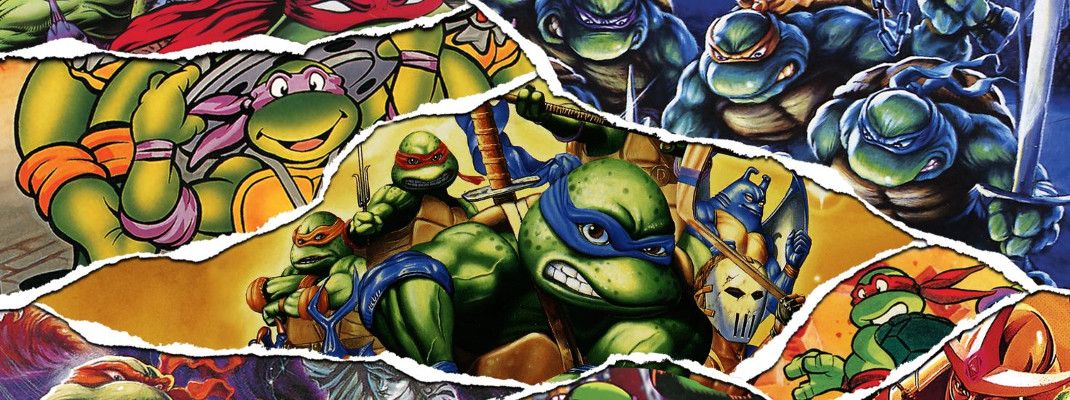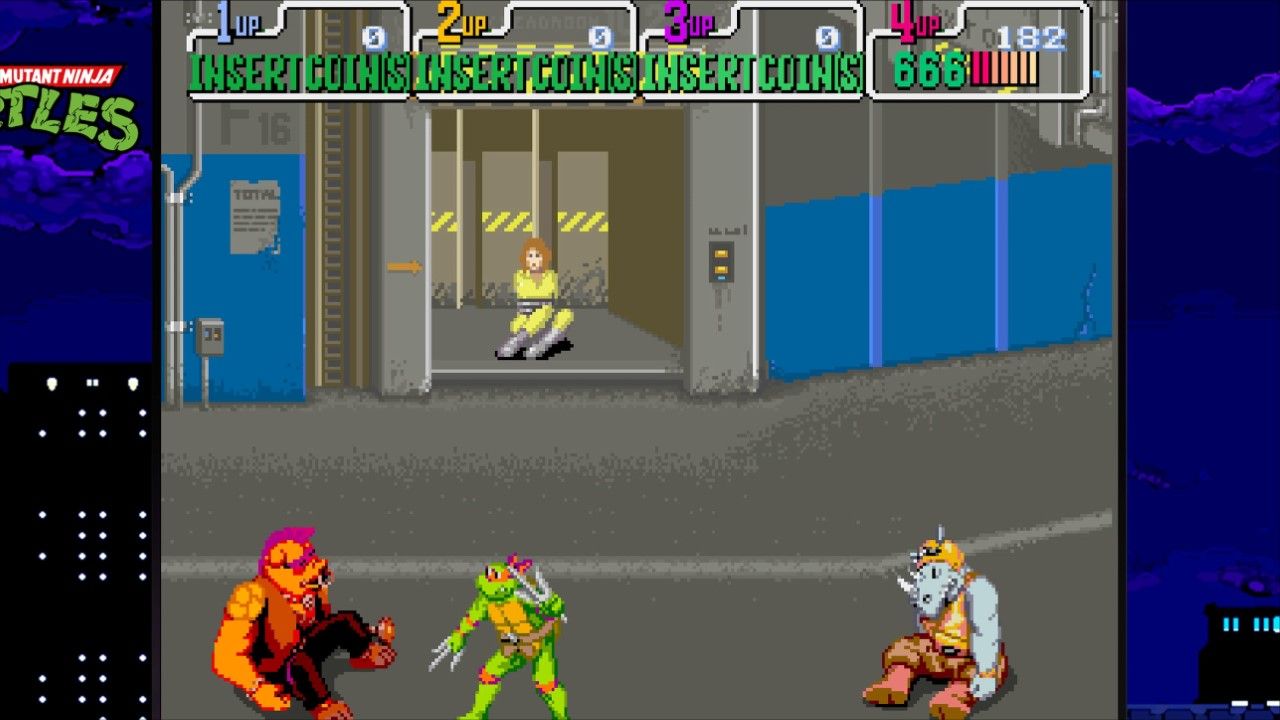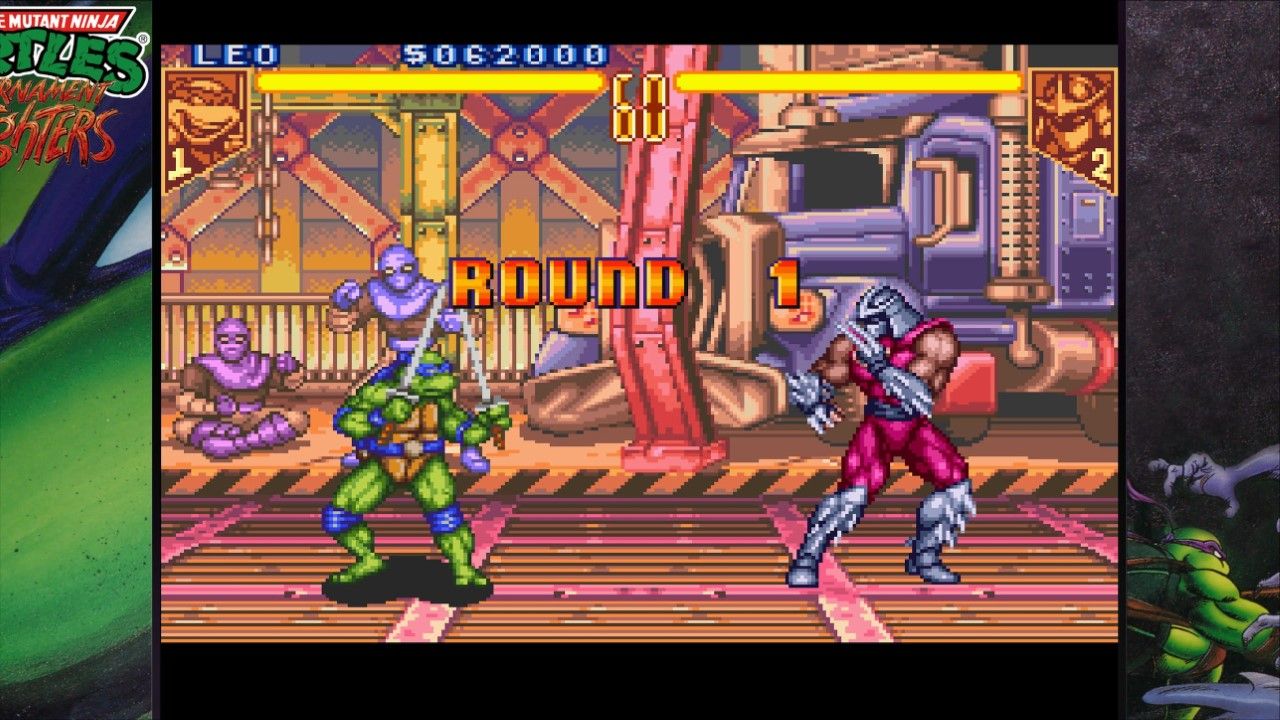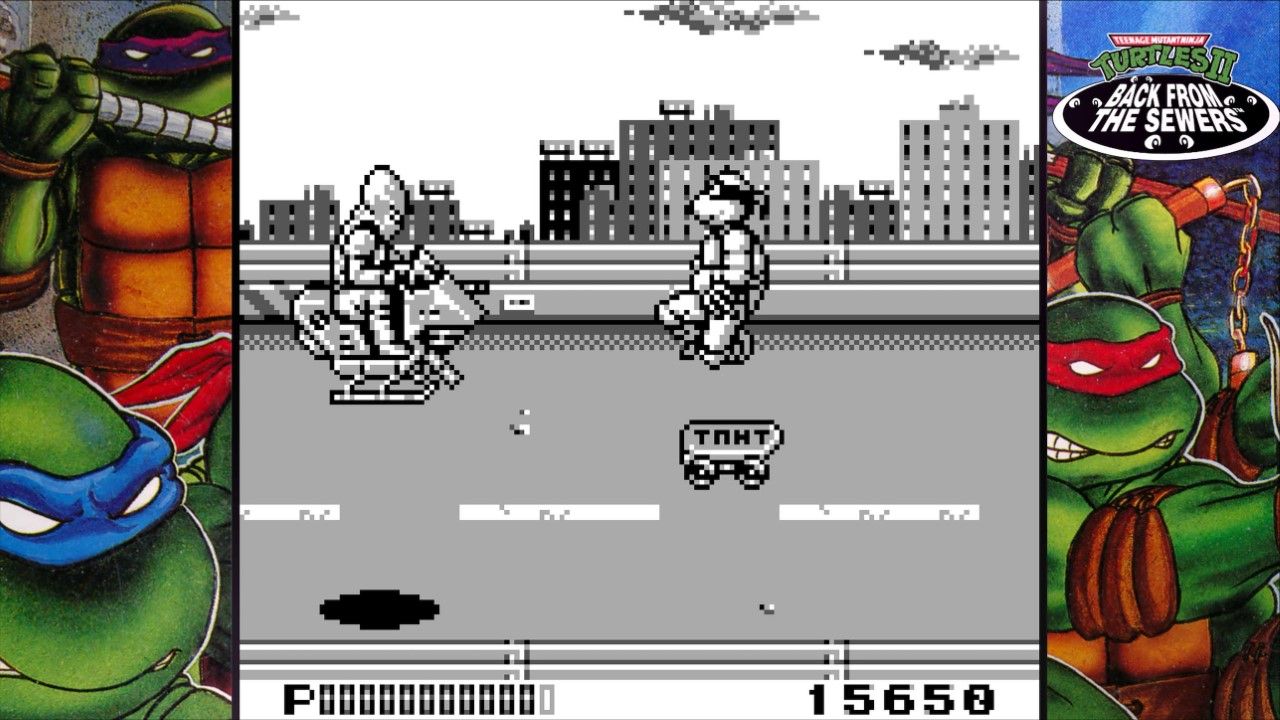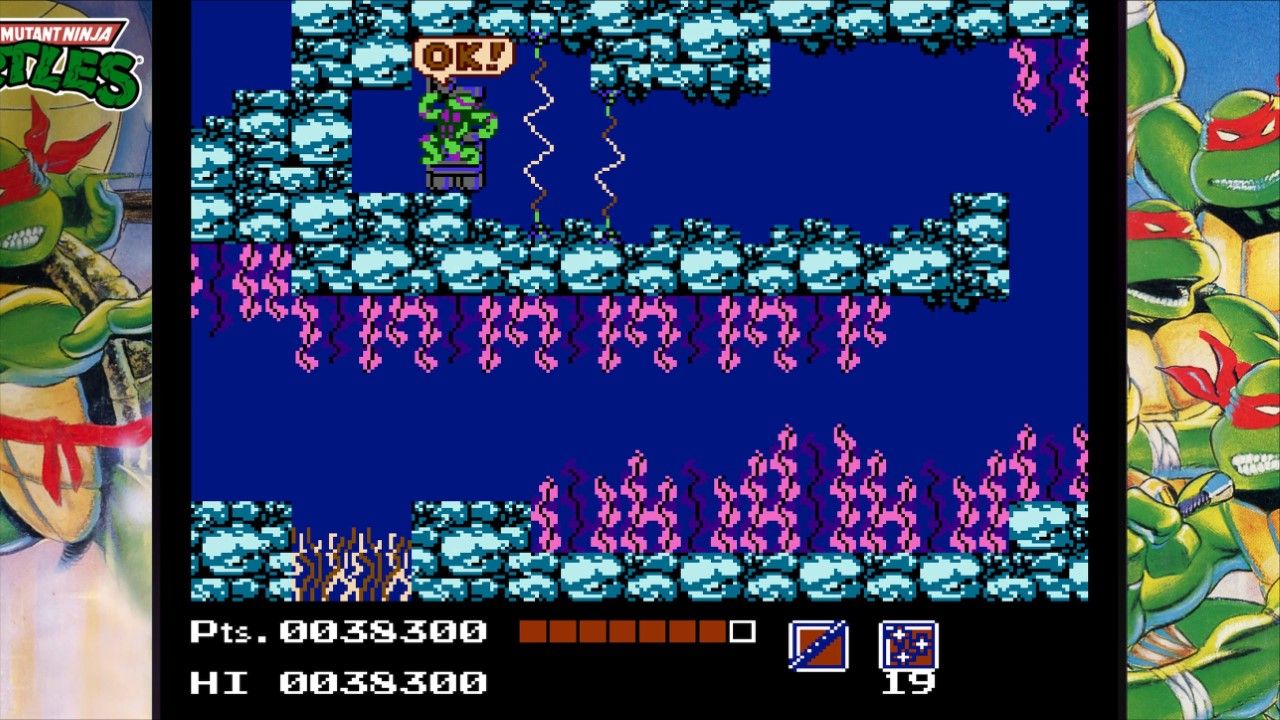Over the past few years Konami has been releasing collections of classics from popular franchises. The retro mines of Castlevania and Contra have been excavated thoroughly, but there was one hot property that has been neglected until now. Being ever the opportunist, Konami saw the buzz that was leading up to the release of Shredder's Revenge so it's likely no coincidence that Teenage Mutant Ninja Turtles: The Cowabunga Collection arrives just a couple months after the former's release. Regardless of the timing, the announcement of this compilation had every TMNT fan shouting "cowabunga."
Teenage Mutant Ninja Turtles: The Cowabunga Collection contains thirteen games across several different platforms, including both American and Japanese ports. This includes three Game Boy titles, Teenage Mutant Ninja Turtles: Fall of the Foot Clan (1990), Teenage Mutant Ninja Turtles II: Back From the Sewers (1991) and Teenage Mutant Ninja Turtles III: Radical Rescue (1993). There are four NES titles, Teenage Mutant Ninja Turtles (1989), Teenage Mutant Ninja Turtles II: The Arcade Game (1990), Teenage Mutant Ninja Turtles III: The Manhattan Project (1991). Sega Genesis fans get two titles, Teenage Mutant Ninja Turtles: The Hyperstone Heist (1992) and Teenage Mutant Ninja Turtles: Tournament Fighters (1993). The SNES console also gets two titles, Teenage Mutant Ninja Turtles IV: Turtles in Time (1992) and Teenage Mutant Ninja Turtles: Tournament Fighters (1993). And to save the best for last the two arcade games, Teenage Mutant Ninja Turtles (1989) and Teenage Mutant Ninja Turtles: Turtles in Time (1991).
Looking over that list it's clear that the collections isn't truly thirteen completely unique games, but there are enough differences in each game to justify the inclusion of each one. The three different incarnations of Tournament Fighters are based from the same template, but actually have differences in each game beyond the respective hardware differences. There are differences in game mechanics and roster, though in this case the SNES version is the best version to play. The two arcade games and their home ports are included, though enough alterations have occurred where they are distinct enough from each other. The NES Arcade Game had to take a major hit to the graphics and the gameplay is simplified, but two extra levels were added alongside minor boss changes. Turtles In Time on SNES took a minor graphical hit, altered the auto-scrolling levels, added a Technodrome stage and made changes to the bosses.
With these Konami collections it seems like they've listened to the criticisms about the earlier ones not including much bonus content. Bonus content includes artwork for game box, manuals, comic books and behind-the-scenes material and stills from the different animated series. It's an impressive collection of artifacts, guaranteed to draw up feelings of nostalgia from gamers who have fond memories of playing these games and having some of them in their collection many years ago. There are also mini strategy guides that contain some general tips for beating these games, patterned in the style of popular gaming magazines that would have covered these games during their original release. Lastly, there's a music player which is a nice additions since there are nice tunes in these games.
In addition to the collection of digital relics to appeal to the long-time TMNT fans, quality-of-life improvements have been added. As is standard with these Konami collections, there's a rewind feature to undo mishaps like missing a difficult jump or using a save state so you can finish the original NES game in more than one sitting. The player can also adjust display settings, determining what screen size they want, using a CRT style filer or turning off boarders. Couch co-op was always the best way to play Turtles, but in the modern age adding online co-op to some games was a smart move with this collection. Beyond those features there's an Enhancements menu that offers a variety of options for each game. These Enhancements vary from game to game but include options like Nightmare Mode for the arcade games, God Mode for several games, turning off flicker and slowdown on NES games or playing as the boss characters in the Tournament Fighters games.
A collection like this is only as good as the games included, and while most games were positively reviewed on early release, some of them don't hold up as well without nostalgia giving them a pass for being "good for their time." The games tend to fit into three different styles, the 2D action platformer, the 2.5D beat 'em up format and the one-on-one tournament fighter model which is, well, used for the Tournament Fighter games. The Tournament Fighters were released in 1993, riding the fighting game craze that started with Street Fighter II and intensified with Mortal Kombat. The SNES one is decent, bu the Genesis and NES versions aren't that great. The idea of a TMNT fighting game is appealing, but good visuals and the license wasn't enough to make up for fighting mechanics that just didn't kick shell the way the more fondly-remembered fighting titles from that era did.
The basic 2D titles are the most challenging of the lot, which include the original NES game and the three Game Boy titles. The NES game was just weird in general. It includes the regular TMNT villains like Shredder, mousers and Bebop and Rocksteady, but also odd choices like a random guy with a chain aw, eyeballs with legs and fire in the shape of people. This game is punishingly difficult, and most us who played it as children immediately think of that dam level. The three Game Boy titles are fun and ascribe the retro school of thought where the game is short, so let's make it difficult so people don't finish it in fifteen minutes, though none are as difficult as the NES game. The first two are rather straightforward, but Radical Rescue is a borderline Metroidvania where each Turtle has a special ability such as Donatello being able to climb walls and Michelangelo using his nunchucks to hover. For its era they have great graphics for the hardware. The gameplay itself is simple, but the mechanics feel clunky when compared to more modern games. Those who enjoyed these games when they were new will likely enjoy revisiting them, but they might be a hard sell for the uninitiated.
When it comes to TMNT games, they hit the jackpot for the winning formula with the 1989 arcade game. The devs likely agree too since this is the style for six of the thirteen games. The two arcade games allow up to four simultaneous players and feature graphics that did justice to the cartoon visuals. The NES port of the 1989 arcade game is one I always had mixed feelings about it. It looks and plays radically different than its arcade counterpart, and even with the addition of the two levels, it didn't make up for replacing the boss fight against Bebop and Rocksteady with Baxter in his fly mutation form. Given the limitations of the NES hardware, however, an arcade perfect port would be impossible and the port is actually good as long as expectations are in check. In this port, fans of the original may notice a certain pizza chain no longer has advertisements hidden in the game. The Manhattan Project uses similar graphics and gameplay as the NES arcade port. Turtles in Time is the crown jewel of this collection, which kept the arcade formula the same and just improved on everything. The SNES port is faithful to the original arcade version, though concessions had to made to convert it to a 16-bit cartridge along with other alterations that may not have been necessary, like replacing the mud monster boss fight with Slash. The Hyperstone Heist is an original game developed for the Sega Genesis. While the graphics and gameplay are similar to the arcade titles, this title barely feels like an original game. It's enjoyable enough, but it reuses so many assets from Turtles in Time it plays like they couldn't decide if they wanted to port Turtles in Time or make a new game, so they split the difference for a partially original new game.
Being a fan of the original TMNT cartoon is reason enough to get excited about this collection. There have been missteps in preserving Turtles gaming history in the past, but The Cowabunga Collection sets to make that right. Every game in this collection looks, sounds and plays like the original versions are supposed to. The collection of bonus content is enough to whittle away quite a bit of time looking at the old game manuals and box art, whether viewing it from a remembrance perspective or learning about the history for the first time. The quality-of-life improvements and enhancements are there for people who want to use them, but are completely optional. During the review it was fun to challenge myself by seeing if I can still beat the dam level without having to resort to using the rewind feature.
Closing Comments:
Teenage Mutant Ninja Turtles: The Cowabunga Collection is a Turtle treasure trove, including every TMNT game released for arcade and console between 1989 and 1993. Having access to all these games in their original format is great for classic Turtles fans and the quality-of-life improvements are there for people who aren't holding themselves to a purist mentality. The amount of bonus content is impressive for this collection and offers fans a lengthy trip down memory lane. Online and local multiplayer makes it easy to enjoy the beat 'em style game, which is with more than one player. This collection's inclusion of thirteen games is enough to make it worthwhile, but the inclusion of all the extra content shows that the developers wanted to make this something special for TMNTfans. This collection is great reason to spend an evening ordering pizza and party like it's 1989.

